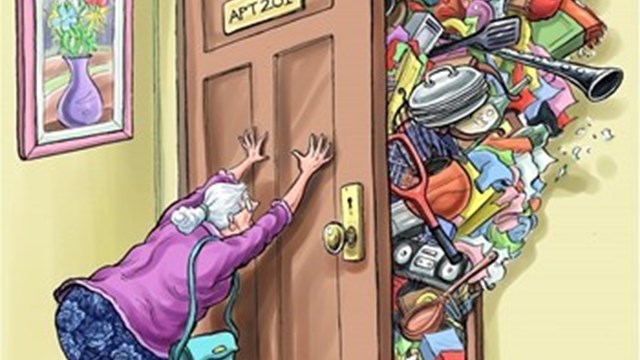Pets have always been a source of comfort and emotional support for their humans, and since the pandemic created more opportunities for us to remain at home, pets have become even more constant companions for many. Given that integrating animals into multifamily living spaces has become the rule rather than the exception, it’s important for boards, residents, and managers to strike the proper balance between neighborly consideration and responsible pet ownership.
The Pups Are Alright
Striking that balance helps make everyone’s home more harmonious. According to the National Institutes of Health (NIH), pets are good for people, both mentally and physically; interacting with animals is shown to actually reduce levels of the stress hormone cortisol, and to lower blood pressure.
As many of us learned firsthand during the pandemic, having a pet helps boost moods and combat loneliness. Jen Santaniello, vice president at FirstService Residential agrees, noting that “Since the pandemic, we’ve seen more people wanting pets, especially dogs. Each building is different, so pet rules are often customized—some charge fees, impose weight restrictions, or require documentation.” Some buildings and HOAs require proof of up-to-date vaccinations, and ban breeds that are considered aggressive; others may require pet registration and records to be kept on file, as well as deposits or fees to cover any loss or damage a pet may cause to the property. Individual buildings may also require insurance coverage, designate pet amenities—as well as areas off limits to pets—and have clear consequences for violations spelled out in their house rules. It’s also common to keep access information for dog walkers and pet sitters on file for security purposes.
Having a clear set of guidelines in place around pet ownership in your building or association is the first step to drafting a policy residents will get behind. Having clear, reasonable rules that are consistently communicated helps keep the peace between pet owners and non-pet owners. Westerhoff agrees that most people he’s come across in buildings are happy to have a set of standards in place, as long as they apply to the building as a whole. “I recently had someone looking to buy an apartment, and they have a pit bull,” he says. “The way we handle this is that we have the board meet the pet to see if the pet is a good fit for the building.”
Service & Emotional Support Animals
In addition to their company, designated service and support animals play an important role in their humans’ health and well-being. The Americans with Disabilities Act (ADA) defines a service animal as any that is individually trained to perform tasks for the benefit of an individual with a disability, including physical, sensory, psychiatric, intellectual, or other mental disabilities.
By contrast, emotional support animals are not covered by the ADA; however, most states and municipalities have laws against disability discrimination in housing, including for individuals who rely on emotional support animals as a reasonable accommodation for their disabilities. Under federal and/or state law, service and emotional support animals are not considered pets, and therefore may be exempt from certain pet policies in condo, co-op, and HOA communities.
According to Scott Sandler, managing partner at the law firm of Sandler & Hansen in Middletown, Connecticut, “Emotional support animals fall within the broader category of what the U.S. Department of Housing and Urban Development (HUD) refers to as ‘assistance animals.’ Assistance animals may be either specially trained service animals, like seeing eye dogs, or animals that provide emotional support or otherwise alleviate the symptoms of a disability.
“According to HUD,” Sandler continues, “an assistance animal is not a pet.” Thus, he says, any restrictions a building or association may have on the number of pets a resident may keep in their unit “does not apply to assistance animals. If the owner has one pet dog and one emotional support dog, the association cannot count the emotional support dog as a pet.
“That said,” Sandler says, “people often turn a blind eye to the ‘reasonable’ obligation when it comes to accommodating a disability. The fact that the dog is an assistance animal doesn’t give the disabled resident carte blanche to ignore other rules concerning pets. The association may still require that the disabled resident keep the dog on a leash when outside of the unit, to clean up after the dog, and to prevent the dog from creating a disturbance. If the resident allows the dog to bark incessantly, if the dog exhibits aggressive behavior towards people or other animals, or if the dog is causing damage to the units or common elements in the community, then the association may proceed with legal action to have the dog removed from the community without violating federal fair housing laws.”
Despite many boards’ frustration with the trend of buying ‘credentials’ online claiming that a pet is actually a medical necessity, rejecting a resident’s request for reasonable accommodation around a support animal may be more trouble (and expense) than it’s worth. In Massachusetts, says Pamela Jonah, a partner with Marcus, Errico, Emmer & Brooks, a law firm based in Braintree, Massachusetts, “The regulations promulgated by HUD, and guidance offered by the Massachusetts Commission Against Discrimination (MCAD) do state that an assistance animal may be subject to reasonable rules and regulations.” And while the animal may not be a nuisance or a menace to neighbors, Jonah notes that “there is an expectation that the board will attempt to work with the owner of the assistance animal so that the animal may stay on the property.”
Alison Phillips, VP of multifamily and commercial real estate at FirstService Residential in Massachusetts, concurs. “We’ve seen issues with people not realizing that their service [or emotional support] animals still have to abide by the pet policies in the building. If somebody is going to have an emotional service animal, they have to fully understand what’s expected of them. They have every right to get one, but they do have the responsibility that comes with it as well.”
Pet Amenities
Some residential buildings are more pet-friendly than others, even providing amenities tailored to residents’ furry friends. Santaniello notes she knows of one building that recently established a dog run, as well as others that have installed pet showers—often near laundry areas—for bathing and post-walk cleanups. Other ideas for pet-friendly amenities include dog-friendly courtyards, on-site grooming, treat stations, and play areas. New buildings are also being designed with pets in mind, with surfaces and materials that are easily washable.
Westerhoff says the buildings his company manages are smaller, and don’t have the space or budget for installing large-scale pet amenities, however he notes that “we do have one building where they built an elaborate pet-friendly roof deck. It’s a walk-up building, and they also added a whole area in the back where pets can use the bathroom in a sanitary way that is easy to clean.”
Mitigating Problems with Policies
Santaniello says pet issues are minimal in most of her buildings. “We don’t get too many complaints about noise or messes, like pets using the bathroom in the lobby for example.” But of course, accidents do happen. “If an animal soils an area, the owner is responsible to clean it up,” Santaniello states. “If it becomes a regular problem, the board would have grounds to terminate their lease.”
Aside from hygiene, the biggest concern for neighbors is usually behavioral issues with an animal. “If a dog attacks someone, then it becomes a problem in the building,” says Westerhoff. Specific rules and penalties can differ from place to place, but generally, a dog can be deemed “dangerous” if it attacks or threatens to attack a person or companion animal, and its owner can face penalties including fines and even criminal charges if the dog causes serious physical injury. Depending on where an incident takes place, owners of dangerous dogs may also be required to take specific actions to control their dog, such as muzzling, liability insurance, and confinement. Dog owners are generally responsible for the injuries caused by their pets, even if it’s the first time the dog has bitten someone.
With proper rules and restrictions in place, however, those types of issues can largely be avoided. Both Santaniello and Westerhoff agree that the best way to combat pet problems in your building or association is to get ahead of them. “Set reasonable standards that are not too onerous to follow,” says Westerhoff. Careful planning and guidelines keep everyone on the same page. Residential living should be healthy and happy for everyone, and by setting standards ahead of time, a building can be a welcoming community to all—including our furry companions.
Kate Mattiace is Associate Editor of New England Condominium.










Leave a Comment